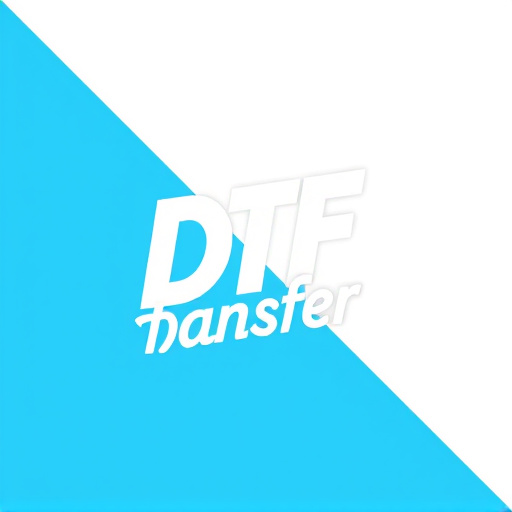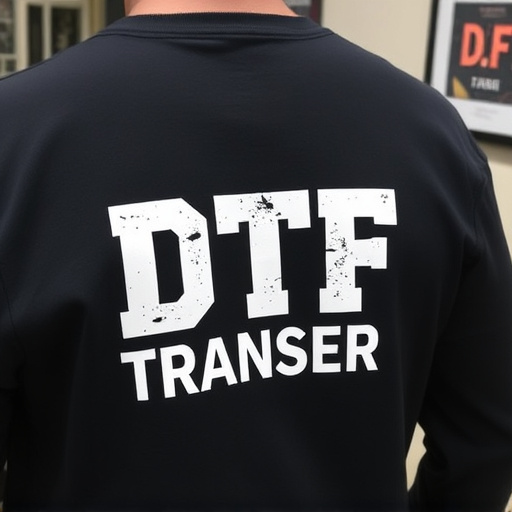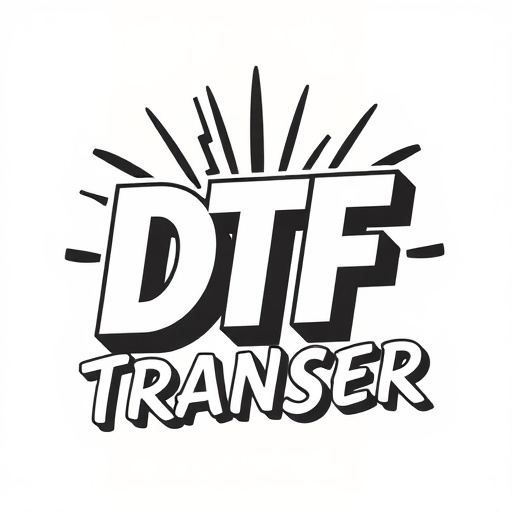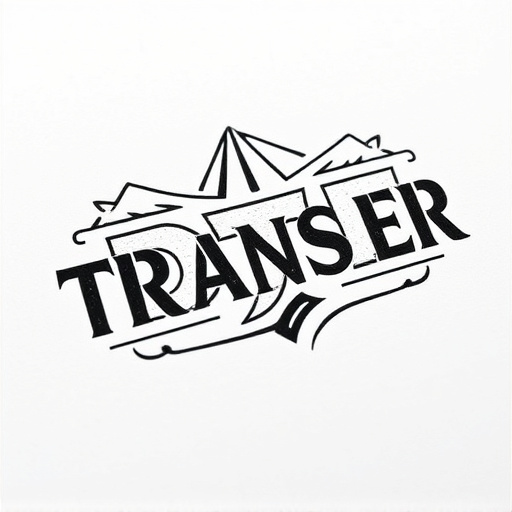Direct-to-Film (DTF) transfers transform local manufacturing with high-quality, precise printing on various surfaces, boosting productivity and customization while reducing costs and lead times. This technology enables local manufacturers to produce on-demand, bespoke products like custom signage, promotional items, and specialized packaging, fostering economic growth and minimizing environmental impact. Locally produced DTF transfers offer significant advantages, including cost savings, supply chain resilience, quality control, and reduced carbon footprint, making them a sustainable solution. They also provide faster turnaround times and superior performance compared to imported alternatives, aligning with shifting consumer preferences for locally manufactured goods and services. Businesses can promote locally sourced DTF transfers through strategic partnerships, educational content, and digital marketing, fostering brand loyalty and driving sales.
“Direct-to-film (DTF) transfers are transforming local printing industries, offering businesses a vibrant alternative to imported solutions. This article delves into the world of locally manufactured DTF transfers, exploring their benefits for both enterprises and the environment. We’ll uncover why these in-house transfers excel over imports, drive market trends, and provide strategies for businesses to embrace this sustainable, high-quality technology. Discover how embracing local DTF production can revolutionize your printing needs.”
- Understanding Direct-to-Film (DTF) Transfers: A Local Manufacturing Perspective
- Benefits of Locally Manufactured DTF Transfers for Businesses
- Environmental Impact: Reducing Imports and Promoting Sustainability
- The Quality Advantage: Why Local DTF Transfers Outperform Imports
- Market Trends: Growing Demand for Localized Printing Solutions
- Strategies to Implement and Promote Locally Sourced DTF Transfers
Understanding Direct-to-Film (DTF) Transfers: A Local Manufacturing Perspective

Direct-to-Film (DTF) transfers are a cutting-edge printing technique that allows for high-quality, precise reproduction of images directly onto various surfaces, including film and plastic. From a local manufacturing perspective, embracing DTF technology offers significant advantages in terms of productivity, customization, and cost-effectiveness. This innovative process eliminates the need for intermediate steps typically involved in traditional printing methods, streamlining production and reducing lead times.
Local manufacturers can leverage DTF transfers to create bespoke products tailored to specific client needs. Whether it’s custom signage, promotional items, or specialized packaging, DTF printing enables on-demand production, ensuring that businesses can swiftly respond to market demands and trends without relying on imported materials or lengthy supply chain processes. This local approach not only fosters economic growth and reduces environmental impact but also ensures a consistent supply of high-quality, made-in-local products.
Benefits of Locally Manufactured DTF Transfers for Businesses

Locally manufactured direct-to-film (DTF) transfers offer numerous advantages for businesses seeking sustainable and efficient production methods. By producing DTF transfers domestically, companies can reduce their reliance on international imports, leading to significant cost savings and supply chain resilience. This is particularly beneficial in regions with limited access to global markets or those facing political or economic instability.
Additionally, local manufacturing allows for greater control over quality standards and production processes. Businesses can ensure that their DTF transfers meet specific requirements, adhere to industry regulations, and maintain consistent performance. This level of customization and control can enhance brand reputation and customer satisfaction, providing a competitive edge in the market.
Environmental Impact: Reducing Imports and Promoting Sustainability
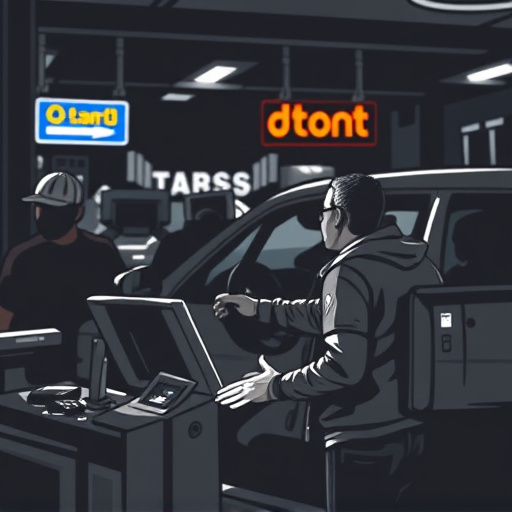
Direct-to-film (DTF) transfers, manufactured locally, offer a sustainable alternative to importing film products. By producing these transfers within the region, countries can significantly reduce their carbon footprint associated with international shipping. This shift towards local manufacturing aligns with global efforts to minimize environmental impact and promote sustainability.
Furthermore, avoiding imports not only conserves natural resources but also reduces the energy consumption linked to long-distance transportation. Local production ensures that the entire process, from raw materials to finished products, occurs within a shorter supply chain, leading to fewer emissions and a healthier planet.
The Quality Advantage: Why Local DTF Transfers Outperform Imports

Locally manufactured direct-to-film (DTF) transfers offer a quality advantage over imports, ensuring superior performance and durability. This is primarily due to the meticulous control local manufacturers have over their production processes. They can adhere to strict quality standards, employing advanced techniques and high-quality materials that are often not readily available or as rigorously regulated in imported products.
Additionally, local DTF transfers benefit from proximity to raw materials and skilled labor, allowing for faster turnaround times and more consistent results. This advantage is particularly significant for businesses and individuals requiring frequent or urgent print jobs, ensuring they receive top-quality outputs without lengthy waits or compromises on aesthetics.
Market Trends: Growing Demand for Localized Printing Solutions

In recent years, there’s been a noticeable shift in consumer preferences towards locally manufactured goods and services, including printing solutions. This trend is largely driven by a growing awareness of environmental impact, support for local economies, and the demand for faster, more personalized products. Direct-to-film (DTF) transfers, for instance, have seen an surge in popularity due to their versatility, quality, and eco-friendly nature—all while offering businesses the agility to cater to unique customer needs with precision and speed.
The market’s lean towards localized printing options is not just a fleeting fad but a significant shift that’s reshaping the industry. By opting for DTF transfers produced locally, businesses can reduce their carbon footprint, ensure timely deliveries, and maintain quality control. This trend is particularly prominent among small to medium-sized enterprises (SMEs) looking to stand out in a competitive market by offering tailored products with swift turnaround times.
Strategies to Implement and Promote Locally Sourced DTF Transfers

To implement and promote locally sourced Direct-to-Film (DTF) transfers, businesses can employ several effective strategies. First, establishing partnerships with local manufacturers specializing in DTF printing can ensure a steady supply of high-quality, domestically produced transfers. Offering these products alongside imported alternatives allows consumers to make informed choices while supporting local industry.
Additionally, creating educational content highlighting the benefits of locally manufactured DTF transfers—such as reduced environmental impact, faster delivery times, and job creation—can foster brand loyalty. Leveraging digital platforms for marketing, including social media and email campaigns, enables targeted outreach to potential customers. Offering incentives, such as discounts or free shipping, can further encourage consumers to opt for local products over imported ones.









